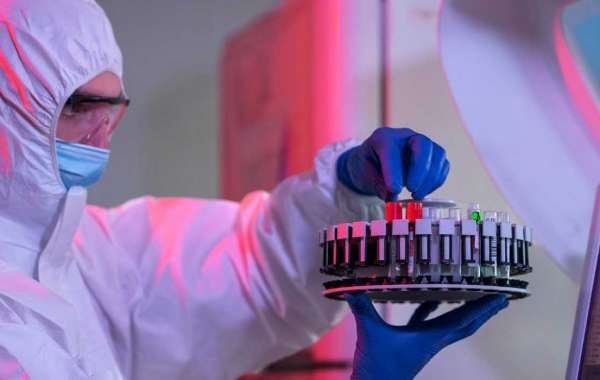In the battle against cancer, accurate and timely detection of residual cancer cells is crucial for effective treatment and patient management. Minimal Residual Disease (MRD) testing has emerged as a promising approach to identify and monitor the presence of residual cancer cells after treatment. This revolutionary testing technique has revolutionized cancer care, allowing physicians to make informed decisions and tailor treatment strategies for improved patient outcomes. In this blog, we will explore the concept of MRD testing, its significance in cancer management, and the latest advancements in this field.
Understanding Minimal Residual Disease
Minimal Residual Disease refers to the small number of cancer cells that may remain in a patient's body after treatment, despite the absence of any visible signs of disease. These residual cells can be the root cause of relapse and disease progression. MRD testing aims to detect and quantify these residual cancer cells with high sensitivity and specificity, enabling early intervention and personalized treatment plans.
Importance of MRD Testing
MRD testing has several critical implications for cancer patients and their treatment. Firstly, it allows for accurate prognosis by identifying patients at high risk of relapse. This information can help guide treatment decisions, such as intensifying therapy for high-risk patients or de-escalating treatment for low-risk patients to minimize unnecessary toxicity. Secondly, MRD monitoring enables the early detection of relapse, allowing for timely intervention and potentially curative salvage therapy. Lastly, MRD testing serves as an essential tool for evaluating the effectiveness of new therapies during clinical trials.
Advancements in MRD Testing
Over the years, significant advancements have been made in MRD testing techniques, enhancing their sensitivity, specificity, and applicability across various cancer types. The development of highly sensitive molecular techniques, such as polymerase chain reaction (PCR) and next-generation sequencing (NGS), has improved the detection limits of MRD testing. These techniques enable the identification of one cancer cell among a million normal cells, ensuring early and accurate detection of residual disease.
Furthermore, the emergence of novel biomarkers specific to different cancer types has facilitated the development of targeted MRD assays. These biomarkers can include gene mutations, chromosomal abnormalities, or specific protein markers expressed by cancer cells. By customizing MRD assays based on these biomarkers, clinicians can monitor the disease status more precisely and tailor treatment strategies accordingly.
Another significant advancement in MRD testing is the utilization of liquid biopsies. Liquid biopsies involve analyzing tumor-derived genetic material, such as circulating tumor DNA (ctDNA) or circulating tumor cells (CTCs), which are present in the patient's blood or other bodily fluids. Liquid biopsies offer a non-invasive and dynamic approach to MRD monitoring, allowing for serial testing and real-time assessment of treatment response and disease progression.
Minimal Residual Disease Testing Market Overview
The Minimal Residual Disease (MRD) testing market has witnessed significant growth and is poised to expand further in the coming years. According to BIS Research,The Minimal Residual Disease (MRD) Testing Market is projected to reach $2,611.2 million by 2027 from $1,089.3 million in 2021, at a CAGR of 14.53%. The market is being driven by various factors, including the increasing prevalence of cancer, rising demand for personalized medicine, and advancements in diagnostic technologies. MRD testing plays a crucial role in cancer management by enabling early detection, monitoring, and treatment decision-making based on the presence of residual cancer cells. As a result, there is a growing recognition of the clinical utility of MRD testing, leading to its integration into routine cancer care protocols.
The market for MRD testing is characterized by a diverse range of technologies and methodologies, including polymerase chain reaction (PCR), next-generation sequencing (NGS), flow cytometry, and immunohistochemistry. These technologies offer varying levels of sensitivity, specificity, and scalability, catering to different clinical requirements and cancer types. Furthermore, the development of targeted MRD assays based on specific biomarkers has fueled the market's growth, as it allows for more accurate and tailored monitoring of residual disease.
In recent years, liquid biopsy-based MRD testing has gained traction. Liquid biopsies involve the analysis of circulating tumor DNA (ctDNA) or circulating tumor cells (CTCs) in blood or other bodily fluids. This non-invasive approach offers advantages such as real-time monitoring, serial testing, and the ability to capture the heterogeneity of tumor cells. Liquid biopsy-based MRD testing is particularly valuable in scenarios where obtaining tissue biopsies is challenging or impractical.
The MRD testing market is witnessing increased adoption in both research and clinical settings. Researchers are exploring MRD testing in clinical trials to evaluate treatment response and identify patients who may benefit from targeted therapies or novel treatment approaches. In clinical practice, MRD testing is becoming an integral part of cancer care, especially in hematological malignancies such as leukemia and lymphoma, where the presence of residual disease is a strong predictor of relapse and disease progression.
Get Free Sample Report - Click Here
Geographically, North America and Europe have been at the forefront of the MRD testing market, driven by robust healthcare infrastructure, high awareness among healthcare professionals, and significant investments in research and development. However, emerging economies in Asia-Pacific and Latin America are expected to witness substantial growth in the MRD testing market, fueled by improving healthcare systems, rising cancer incidence, and increasing focus on precision medicine.
The competitive landscape of the MRD testing market is characterized by the presence of both established players and emerging companies. Key market players are actively engaged in developing innovative MRD testing solutions, expanding their product portfolios, and forging strategic partnerships to strengthen their market position. Additionally, collaborations between diagnostic companies and pharmaceutical firms are gaining momentum, aiming to integrate MRD testing into clinical trials and treatment decision-making processes.
In conclusion, the MRD testing market is experiencing rapid growth driven by the increasing recognition of its clinical significance in cancer management. Advancements in technologies, the development of targeted assays, and the rise of liquid biopsy-based testing are key factors propelling the market's expansion. As the market continues to evolve, there will be a greater emphasis on standardization, cost-effectiveness, and integration of MRD testing into routine clinical practice, ultimately leading to improved patient outcomes in the fight against cancer.













